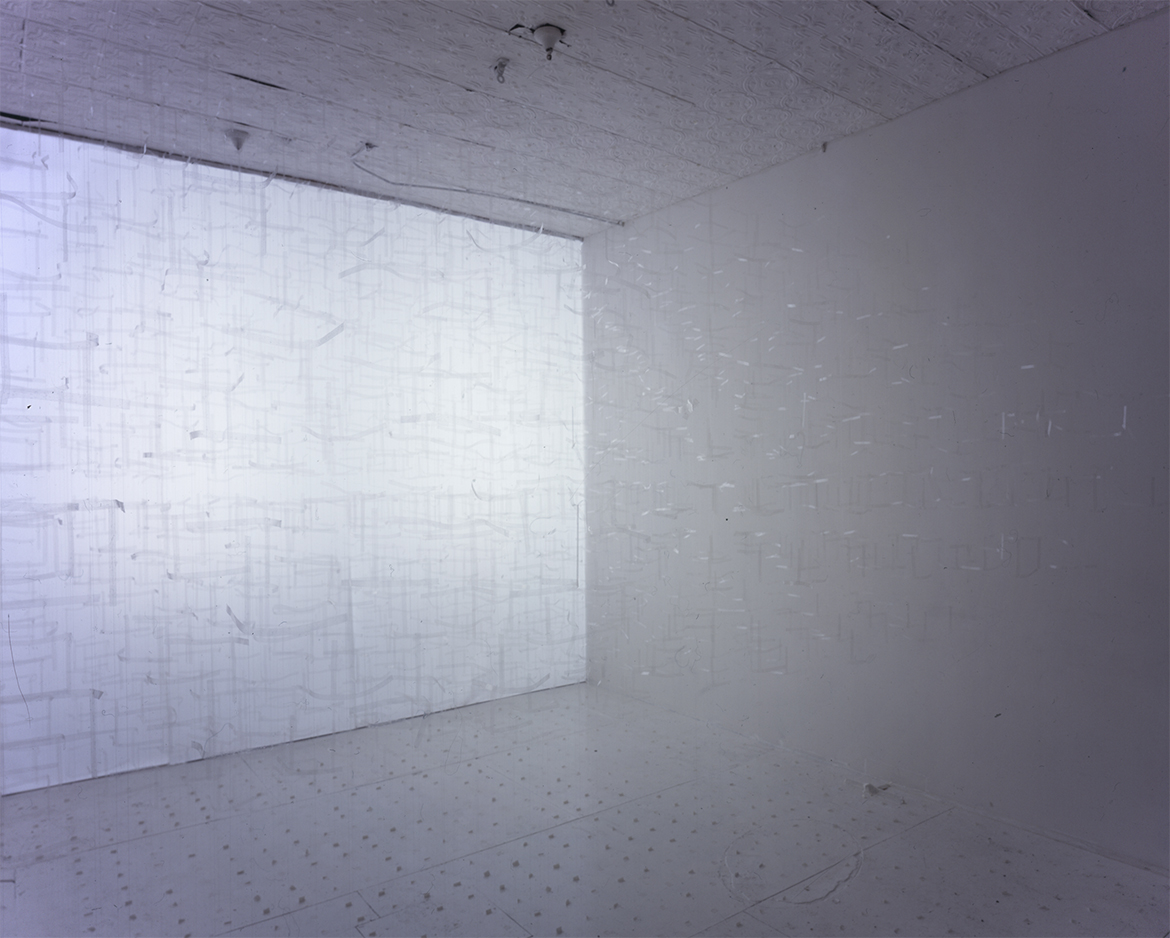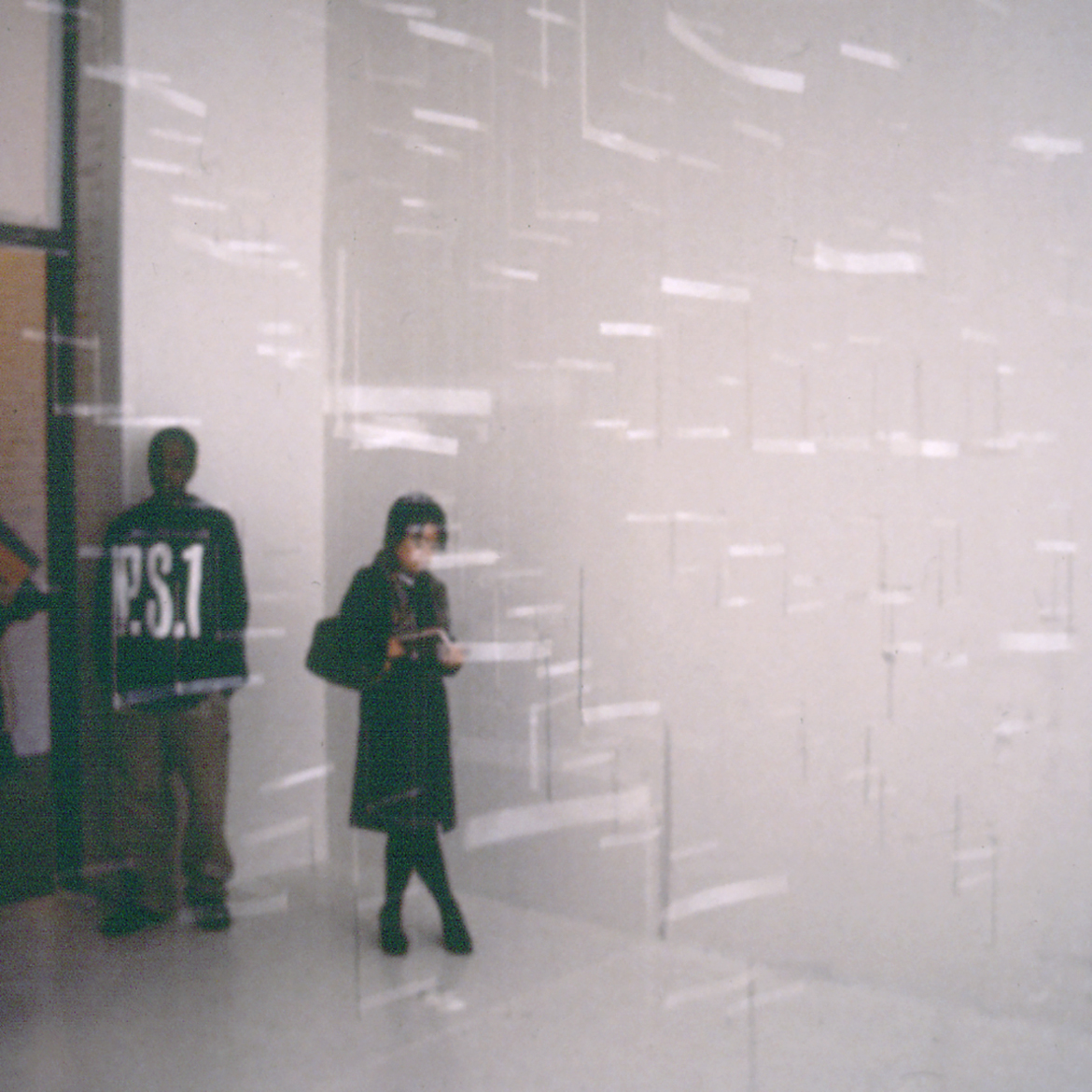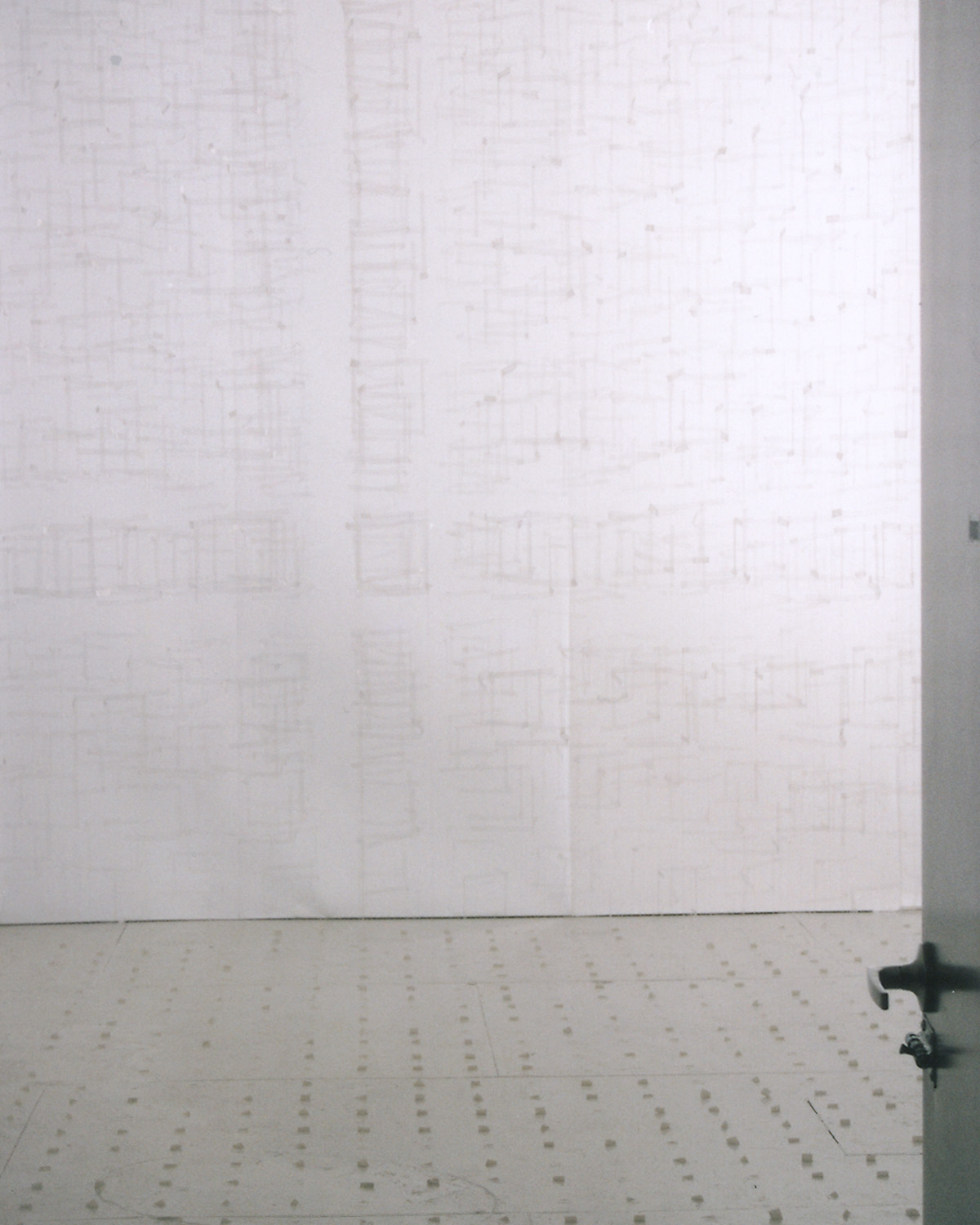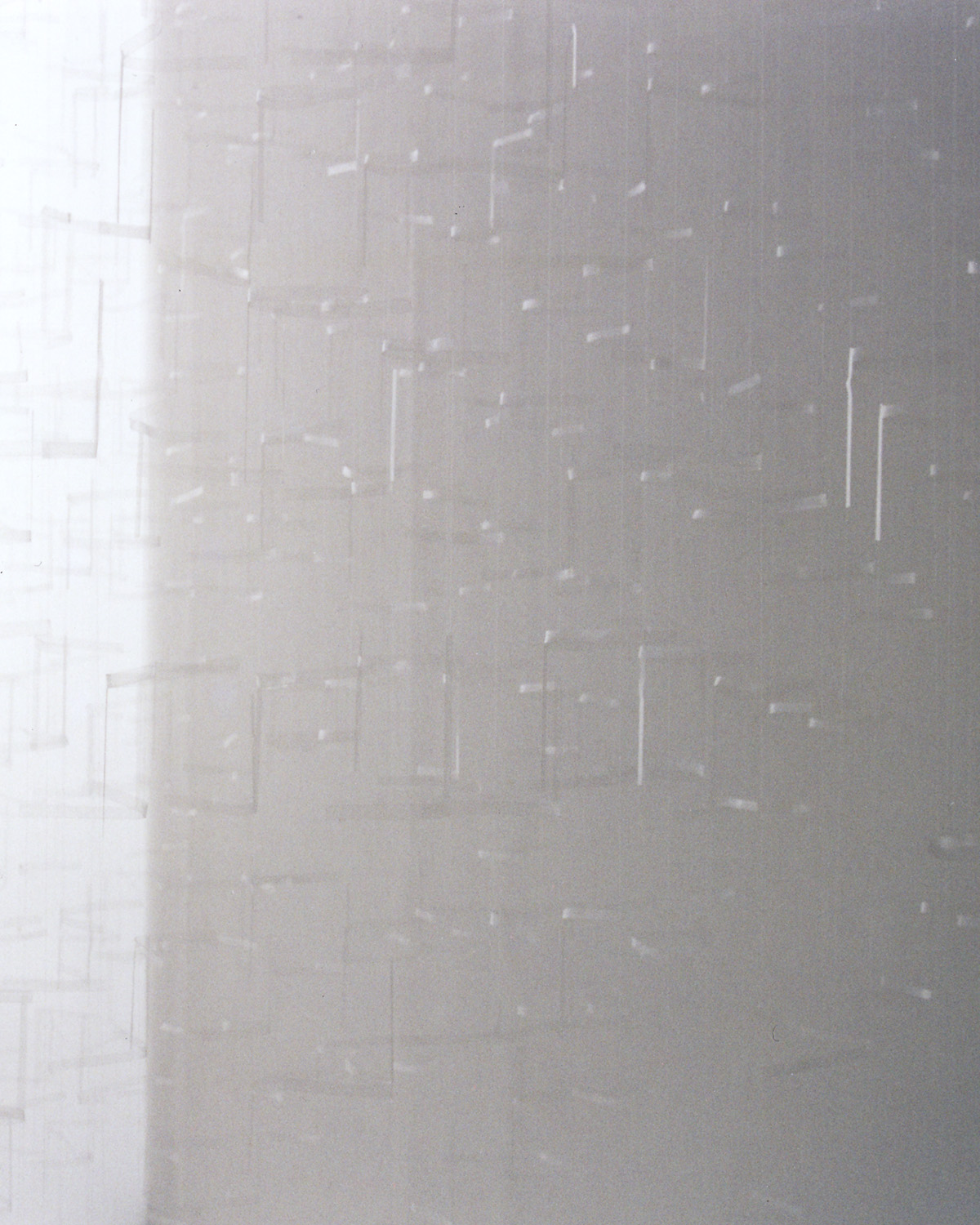Full Empty Space
2001. Monofilament, adhesive tape, plastic foil.
Upon entering the space, the viewer is surrounded by whiteness - by light. Lots of barely visible elements float all around him/ her. By following the rhythm of simple geometrical repetition of these spatial elements, our movements slow down. The material elements, instead of shaping and defining the space, underline perception of its emptiness and immateriality.
Exhibition: Ivana Franke, Full Empty Space, Special Projects. MoMA PS1, New York. Photo Nicholas Katz
IGOR SIDDIQUI, FULL EMPTY SPACE, http://www.ps1.org/cut/writers/siddiqui.html
Ivana Franke’s temporary installation full empty space at P.S.1 brings into question the relationship between perception and materiality. Full empty space is a record of a particular spatial discipline in which light is modulated, filtered, reflected and transformed into a set of seemingly ephemeral images. As suggested in the title and evident from its construction, the installation probes the conditions of visibility/invisibility, presence/absence, and the interior/exterior. The tectonic aspect of it, in particular, mediates between some of the issues that arise from these conditions.
In his book Words of Light: Theses on the Photography of History, Eduardo Cadava writes, "Light can in fact only give way to an image when its path is impeded, when it is turned away from its course. In other words, to be what it is, to be revealed, light must be interrupted" (93). Referencing Henri Bergson’s discussion regarding the relationship between light and perception in Matter and Memory, Cadava critically frames a way to conceptualize Franke’s intervention at P.S.1. In full empty space, the material construction that interrupts the light and renders it visible is in itself invisible. This invisibility, although partially a physical property, is also, and to an important degree, a cultural construct.
Franke stretched lines of nylon thread vertically, according to a set of corresponding grids, ceiling to floor. She then constructed a three-dimensional system, within the field of the grid, attaching strips of clear adhesive tape from thread to thread and expanding them in x, y and z directions. The resulting matrix is set against a wall of evenly dispersed light, occupying all but a swath of space at the room’s entrance, enough for a row of spectators.
Nylon thread is a material conventionally associated with invisible structure. For example, it provides a marionette with its life and at the same time secures that the fantasies of an inanimate object’s coming to life remain uninterrupted. This invisibility, of course, is not entirely physical. One can see the lines of thread, but as they are the mechanism of operation and not the object, their materiality is repressed and rendered absent.
Clear adhesive tape, as with most glue-based materials, in its typical use provides a joint to at least two disconnected elements without visibility. Its clear body functions as a line of implied seamlessness, its surface and edges visible, but deniable. The development of numerous kinds of adhesive tapes available on the market points to the desire to force the material and its properties to disappear. Adhesive tape with a matte surface is made to match certain paper products; the tape that does not turn yellow over time in order to never give itself away; the double-stick tape which has the ability to hide itself under the surface for which it provides a joint. These are just a few of the examples that illustrate the desire and the market demand for the material to operate efficiently, but invisibly.
The tectonic system assembled with the components that are conventionally considered invisible is here given a double role. On the one hand, the thread and the tape are made to give light its shape, not focusing the attention to themselves, but to light’s gradation, filtration and reflection. On the other hand, the obsessive craft of the installation gives away the materials’ properties, strengths and weaknesses, allowing the material to resist the abstraction of the matrix, its details coming to the foreground of the visual field. The experience of the installation, then, is a constant movement between the immaterial rendering of the light and the material field of threads and ribbons, sticky, messy and shivering in the air, in front of a packed row of viewers.
The use of familiar materials in unfamiliar applications, referencing the ordinary and exposing its strangeness is a strategy in spatial production with a cohesive lineage. The deployment of transparency - material and cultural - and its effects on perception is a modern convention. Ivana Franke has taken on both and managed to construct a space between fullness and emptiness, presence and absence, and between the interior and the exterior. She constructed an empty room that one can look at but not occupy, filled up a space that one remembers as a set of hallucinatory images, but has never touched, and has obsessively crafted a system that one is so compelled to describe as minimal. Full empty space is an interstitial space between oppositions, contradictions and paradoxes.





